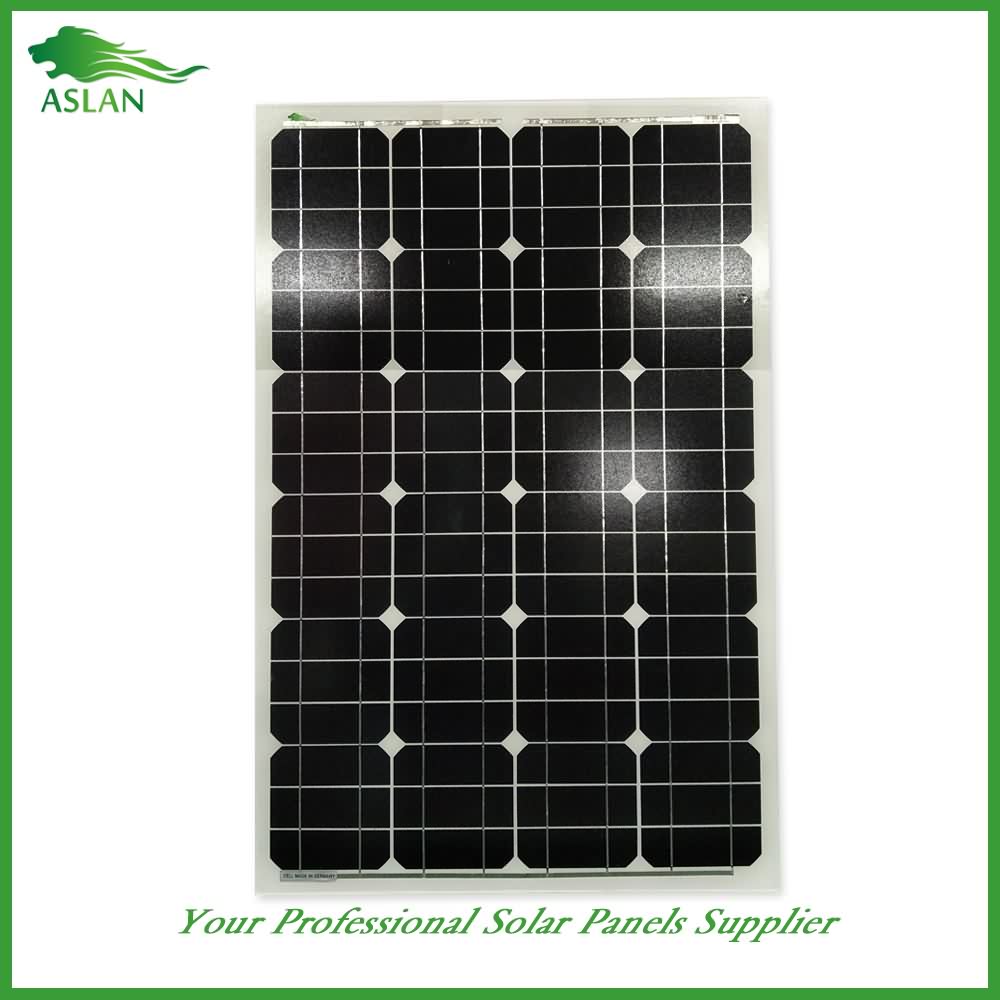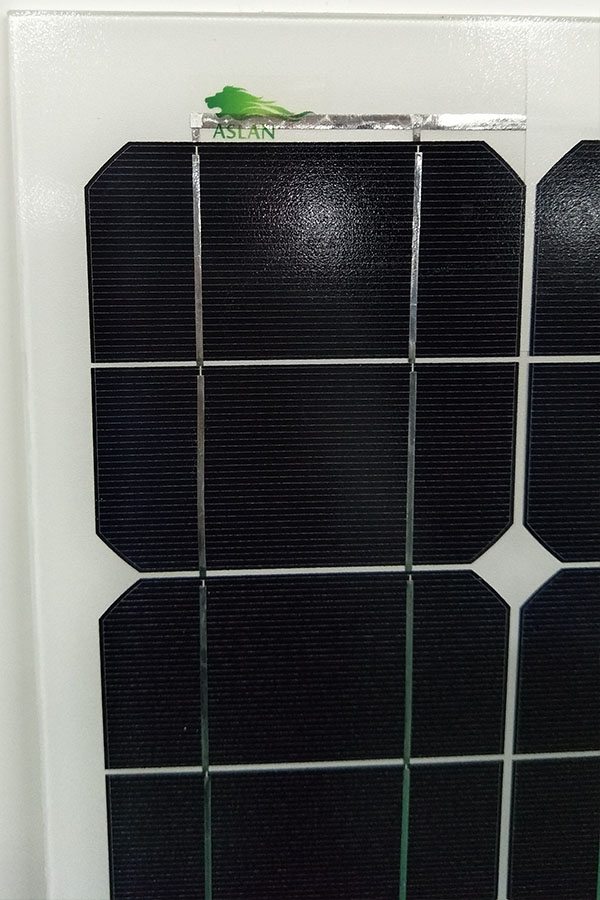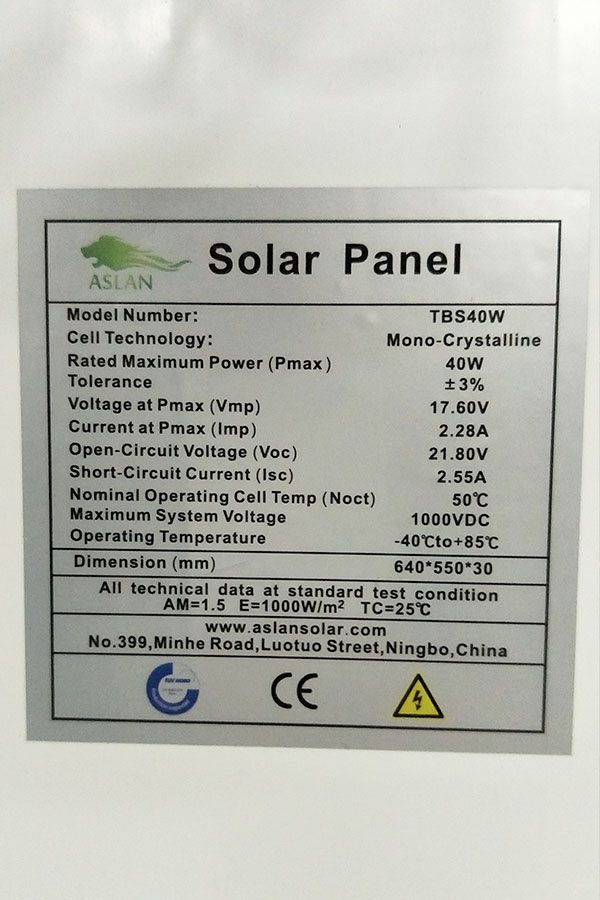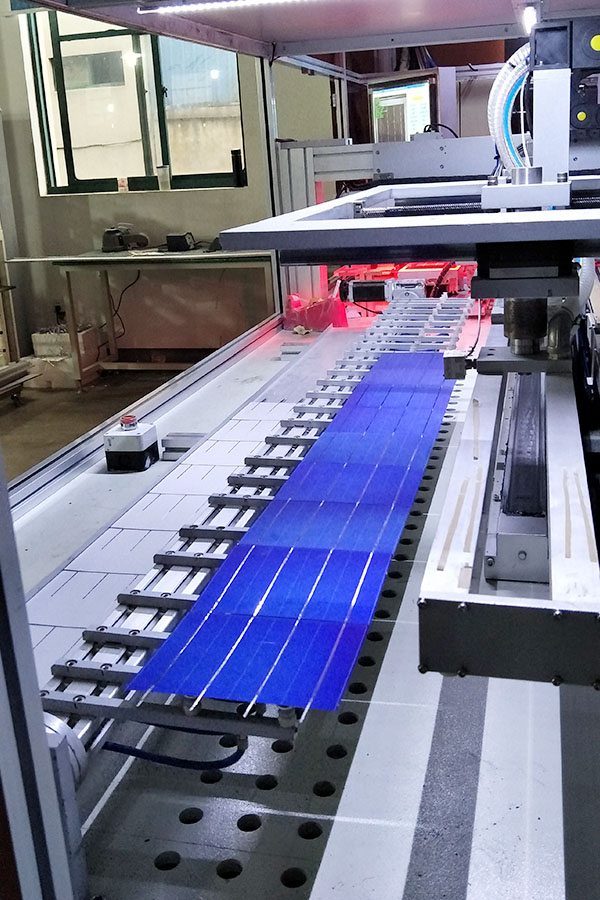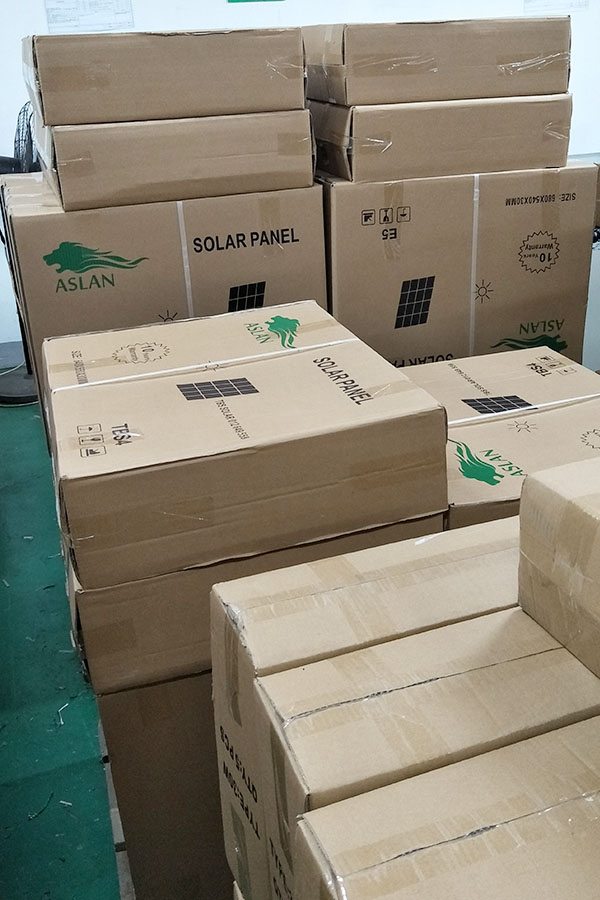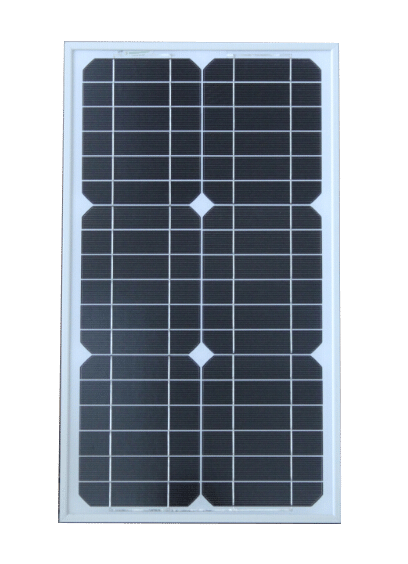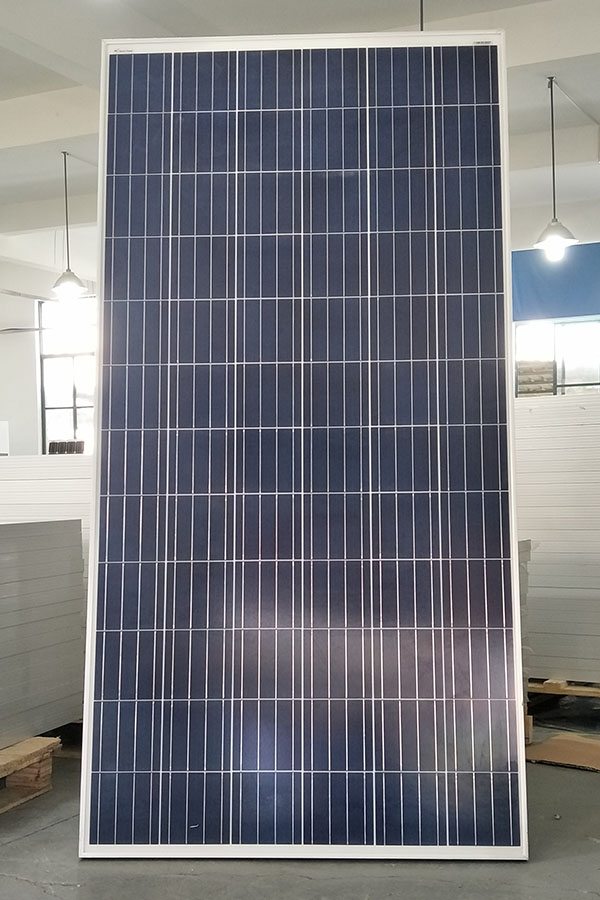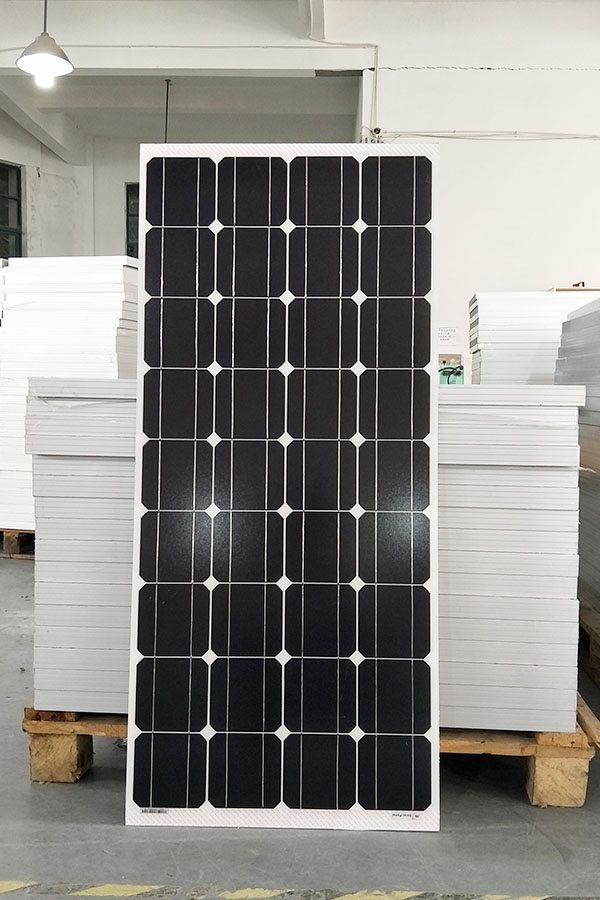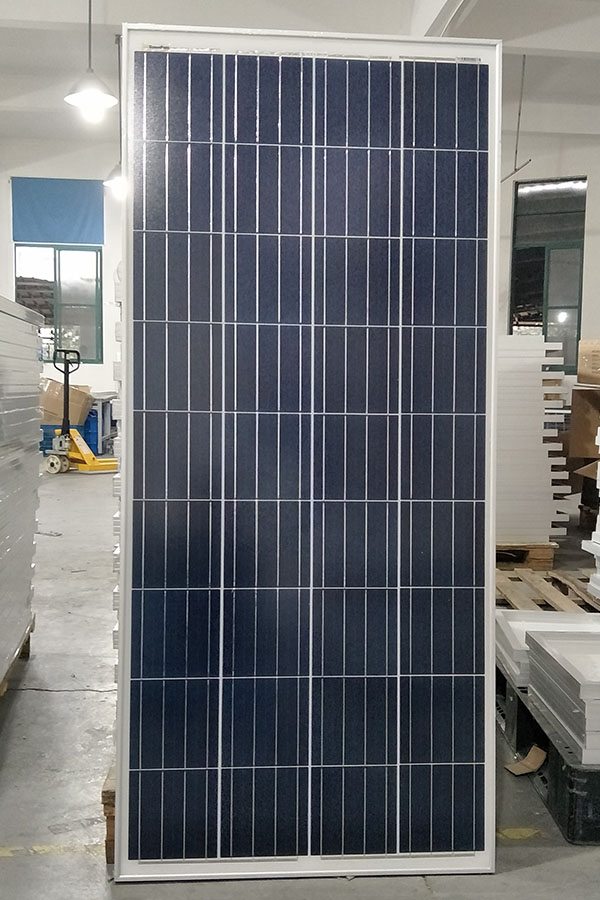Factory wholesale price for Mono-Crystalline 60W Solar Panel Uruguay Manufacturer
Short Description:
Our commission is to serve our users and clients with best quality and competitive portable digital products for Factory wholesale price for Mono-Crystalline 60W Solar Panel Uruguay Manufacturer, We warmly welcome merchants from home and abroad to call us and establish business relationship with us, and we will do our best to serve you.
Mono-Crystalline 60W Solar Panel
Technical parameter
Maximum Power(W) 60W
Optimum Power Voltage(Vmp) 18.46V
Optimum Operating Current(Imp) 3.25A
Open Circuit Voltage(Voc) 22.51V
Short Circuit Current(Isc) 3.57A
Mechanical Characteristics
Cell Type Mono-crystalline 125 x 83mm
No of Cell 36 (4x9pcs)
Dimensions 821x554x35mm
Weight 5.0Kg
Front Glass 3.5mm,High Transmission, Low Iron,Tempered Glass
Junction box IP65 Rated
Output Cable TUV 1×4.0mm2/UL12AWG,Length:900mm
Temperature and Coefficients
Operating Temperature(°C): -40°C ~ + 85°C
Maximum System Voltage: 600V(UL)/1000V(IEC) DC
Maximum Rated Current Series: 15A
Temperature Coefficients of Pmax: -0.47%
Temperature Coefficients of Voc: -0.389%
Temperature Coefficients of Isc: 0.057%
Nominal Operationg Cell Temperature (NOCT): 47+/-2°C
Materials of solar panel
1).Solar Cell——Mono-crystalline solar cell 125*83mm
2).Front Glass——-3.2mm, high transmission, low iron, tempered glass
3).EVA——-excellent anti-aging EVA
4).TPT——-TPT hot seal made of flame resistance
5).Frame——anodized aluminum profile
6).Junction Box——-IP65 rated, high quality, with diode protection
Superiority: high quality anodized aluminum frame, high efficiency long life, easy installation, strong wind resistance, strong hail resistance.
Features
1. High cell efficiency with quality silicon materials for long term output stability
2. Strictly quality control ensure the stability and reliability, totally 23 QC procedures
3. High transmittance low iron tempered glass with enhanced stiffness and impact resistance
4. Both Poly-crystalline and Mono-crystalline
5. Excellent performance in harsh weather
6. Outstanding electrical performance under high temperature and low irradiance
Quality assurance testing
Thermal cycling test
Thermal shock test
Thermal/Freezing and high humidity cycling test
Electrical isolation test
Hail impact test
Mechanical, wind and twist loading test
Salt mist test
Light and water-exposure test
Moist carbon dioxide/sulphur dioxide
Please SHARE & SUBSCRIBE.
This video explains how you can run your house on solar electricity generated by solar panels in Pakistan. This video in Urdu language produced by Dr. Pervez Hoodbhoy. There is electricity shortfall in the country and electricity is also becoming very expensive day by day. Ultimately, you can run your home and car on solar electricity. Solar tube-wells and flour mills are also running on solar panels in the rural area. It really fascinates me.
You can run your home and your cars on solar energy. Here is another good video to watch how a guy is doing this:
Related Keywords:
Run your car on water,run your car on hydrogen,free energy devices,free energy magnet motor,solar home,generate electricity,Solar Electricity,solar panel system,solar powered,Off-the-grid,Solar Power (Character Power),offthegrid,free power,alternative energy,home solar system,residential solar panels,sun energy,hydroelectric energy,living off the grid,off the grid living,going off the grid,get off the grid,diy hydrogen for home use
Get your free audio book:
http://eonl.us/f/b008kzulug
Also called energy scavenging, energy harvesting captures, stores, and uses “clean” energy sources by employing interfaces, storage devices, and other units. Unlike conventional electric power generation systems, renewable energy harvesting does not use fossil fuels and the generation units can be decentralized, thereby significantly reducing transmission and distribution losses. But advanced technical methods must be developed to increase the efficiency of devices in harvesting energy from environmentally friendly, “green” resources and converting them into electrical energy.recognizing this need, Energy Harvesting: Solar, Wind, and Ocean Energy Conversion Systems describes various energy harvesting technologies, different topologies, and many types of power electronic interfaces for stand-alone utilization or grid connection of energy harvesting applications. Along with providing all the necessary concepts and theoretical background, the authors develop simulation models throughout the text to build a practical understanding of system analysis and modeling.with a focus on solar energy, the first chapter discusses the Iv characteristics of photovoltaic (pv) systems, Pv models and equivalent circuits, sun tracking systems, maximum power point tracking systems, shading effects, and power electronic interfaces for grid-connected and stand-alone Pv systems. It also presents sizing criteria for applications and modern solar energy applications, including residential, vehicular, naval, and space applications. The next chapter reviews different types of wind turbines and electrical machines as well as various power electronic interfaces. After explaining the energy generation technologies, optimal operation principles, and possible utilization techniques of ocean tidal energy harvesting, the book explores nearand offshore approaches for harvesting the kinetic and potential energy of ocean waves. It also describes the required absorber, turbine, and types, along with the power electronic interfaces for grid connection and commercialized ocean wave energy conversion applications. The final chapter deals with closed, open, and hybrid-cycle ocean thermal energy conversion systems.
